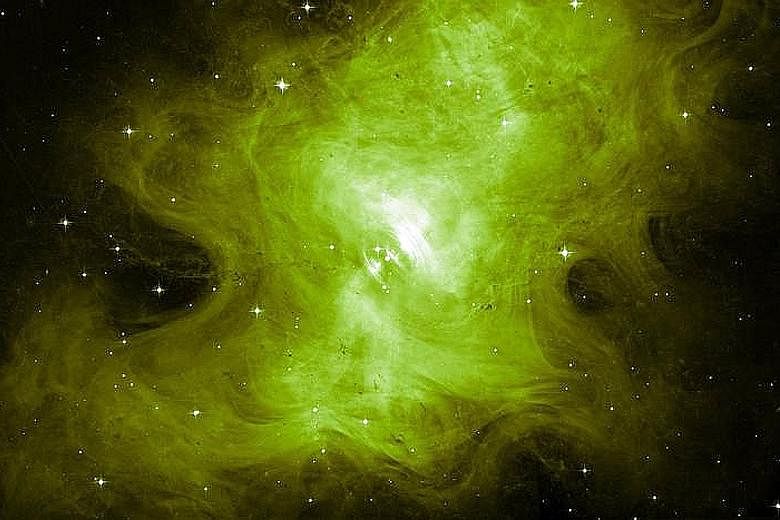This ghoulish-looking dead star captured by the National Aeronautics and Space Administration's Hubble Space Telescope is the Crab Nebula. Deep in its core, it continues to beat with rhythmic precision even though it exploded long ago as a supernova.
Its "heart" is the crushed core of the exploded star called a neutron star. It has about the same mass as the Sun but all of that is squeezed into an ultra-dense sphere that is only a few kilometres across and 100 billion times stronger than steel.
The Crab Nebula is one of the most historic and intensively studied supernova remnants. Observations of the nebula date back to 1054, when Chinese astronomers first recorded seeing a "guest star" during the daytime for 23 days. The star appeared six times brighter than Venus.
It is located 6,500 light years away in the constellation Taurus, and its resemblance to a crustacean is said to have given it its name.

